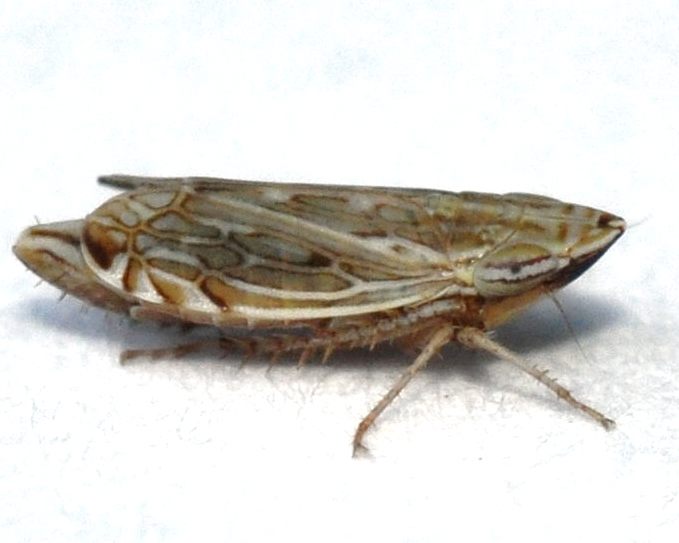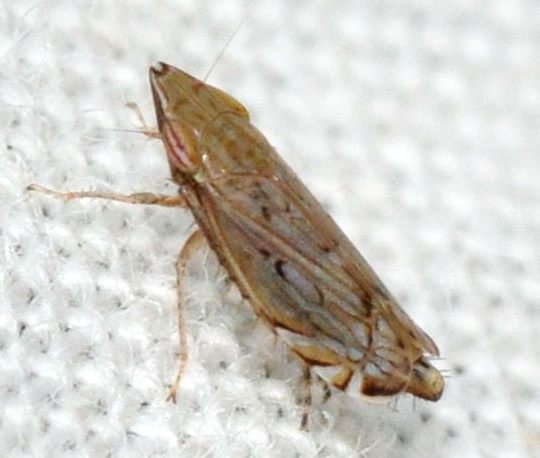Description: Flexamia is a very difficult genus to identify visually. Of the species that have been recorded, and could be recorded in North Carolina, there are two species that are easy to identify visually: areolata and pyrops; see their respective pages. A third species, picta (see below), should be identifiable based on visual characteristics. For the other species, a view of the underside to show female pregenital sternite or male genital plate shapes is necessary in making an identification. Even then however, an ID may not be possible- this is a tough genus! For example, it has been noted that there is "no reliable external character that separates sandersi from clayi," and some specimens of atlantica and producta may resemble reflexa. Below are characteristics pertaining to the harder to identify species, taken from Whitcomb & Hicks 1988. Two species, atlantica and inflata, are not confirmed from the state but could very likely be found. See this paper for more information and diagrams of genitalia. All but the last two species are in the Flexamia prairiana group and therefore even more similar to one another. This page serves as a home for all Flexamias that cannot be identified from photos alone.
atlantica- face with black interocular band, or at least with this area black in addition to other black marks on the face; upper half is black, contrasting with pale lower half. Crown is moderately produced, with length 1.32 x the interocular width and 0.59 x the head width. Male genital plates are elongate, notched apically. Female pregenital sternite (similar to sandersi), with hind margin produced posteriorly in the middle and with a shallow median notch; dark coloration on the median projection. Individuals of atlantica tend to be larger than those of reflexa, and this species can occur in areas with producta but that species tends to be smaller and tends to have a much more produced crown (tentative identification possible). Males 3.2-4.2 mm long, females 3.6-4.5 mm.
clayi- face brown to black above, usually shading gradually to paler below. Crown variably produced, with the length 1.44 x the interocular width and 0.71 x the head width. Female pregenital sternite has concave indents on the side of a prominent, convex median projection; there is a small median notch in this projection, with dark coloration on either side. Male genital plates are prominently divergent apically, with outer margins widened at the midlength. Adult males 3.3-4.0 mm long, females 3.1-3.8 mm.
producta- face variable but often with brown interocular band contrasting with pale color of remainder; if without band (occasionally obscured in darker specimens), then irregularly darkened. Crown usually conspicuously produced, with length 1.62 x interocular width and 0.75 x head width; the produced crown of this species provides a tentative indication of identification. Female pregenital sternite with hind margin moderately produced posteriorly in the middle and with a shallow median notch; dark coloration on the median projection. Male genital plates are elongate, notched at the apex and diverging slightly from one another; outer margins widened at the midlength. Males 3.0-3.5 mm long, females 3.2-3.9 mm.
reflexa- face variable, often pale on lower half with broad interocular band; band may be obscured in dark specimens. Length of crown variable, median length usually 1/3 x greater than interocular width and about 2/3 x the head width. Female pregenital sternite has posterior margin with slightly convex median projection, which is notched in the middle. Male genital plates largely triangular together in shape. Males 3.1-4.0 mm, females 3.2-4.2 mm.
sandersi- face varying from dark above and shading to paler apically to brown or black throughout, but often brown or tan; interocular area never black (no defined band present). Crown produced, with median length 1.48 x interoculate width and 0.69 x the full head width. Female pregenital sternite has sinusoidal posterior margin, with concave notches on the sides of a convex, relatively flat median projection with a small notch in the middle; lateral margins of the sternite are roundly convex. Male genital plates are elongate, apically notched; in some specimens, bidentate. Together, the plates appear triangular. Adult males 2.9-3.5 mm long, females 3.2-3.9 mm.
inflata-
face stramineous, with or (more frequently) without a basal, pale brown interocular band. Overall, usually light stramienous in color; never has a dark spot in the center of the forewing. Crown is short: the length is 1.11 x the interocular width and 0.58 x the head width. This species MAY be tentatively identified visually by the very light pigmentation (most specimens), being light stramineous in color in combination with a black spot on the apical forewing cell but no black spot in the middle of the wings; additionally, the crown is one of the shortest in the genus. Female pregenital sternite with concave notches on the sides of a convex, relatively flat broadly produced median projection with a small notch in the middle; dark coloration along the sides of the notch, lateral margins of the sternite are convex and come to a point. Male genital plates are short, about 1/2 the length of the pygofer; triangular, with a posterior notch in the middle that separates the two (apically divergent). Adult males 3.1-4.4 mm long, females 3.6-4.6 mm.
picta- there is a conspicuous, dark apical wing blotch. The face is a sordid yellow color with a broad, black interocular band; face sometimes light gray or very pale brown. Forewings are usually dark gray, contrasting with lighter crown and pronotum. Female pregenital sternite with hind margin concave at each side of a broad but weakly convex median projection, slightly notched in the middle (some specimens may show a more pronounced notch). Male genital plates are proportionally smaller than the other species, much shorter than the pygofer, being triangular in shape with rounded apexes. Males 2.9-4.0 mm long, females 2.9-4.2 mm. |

 »
»



 »
»

